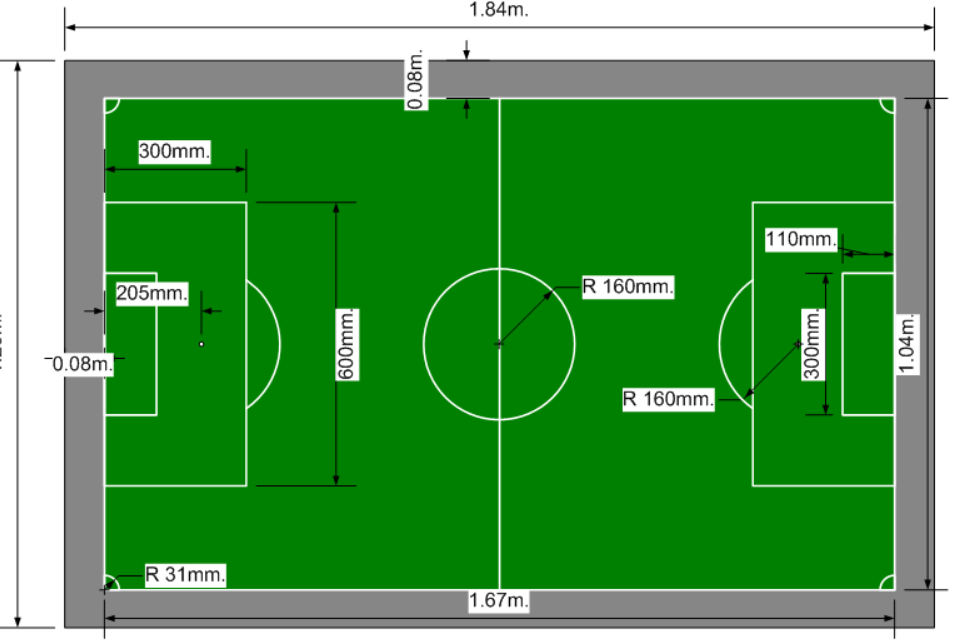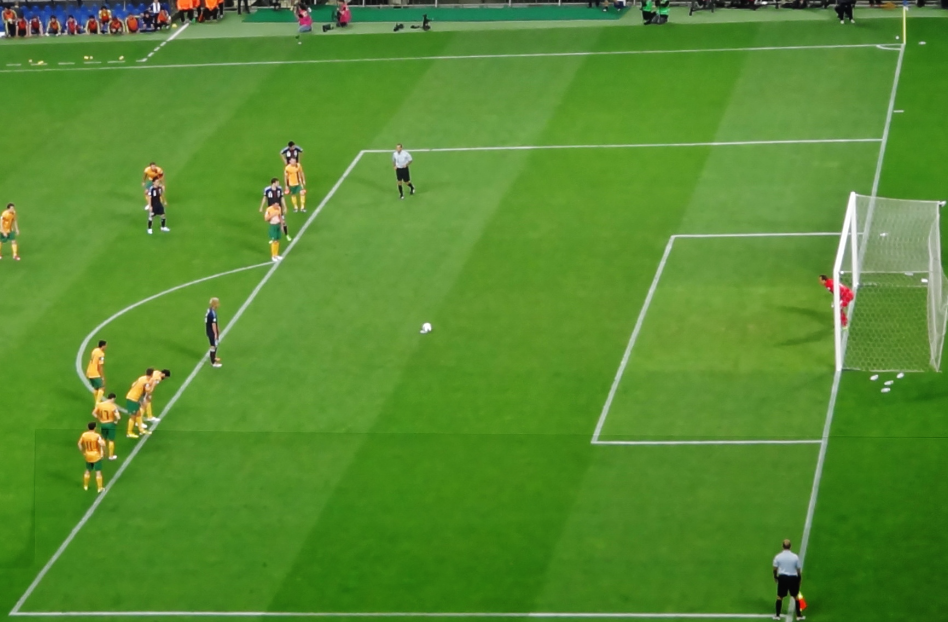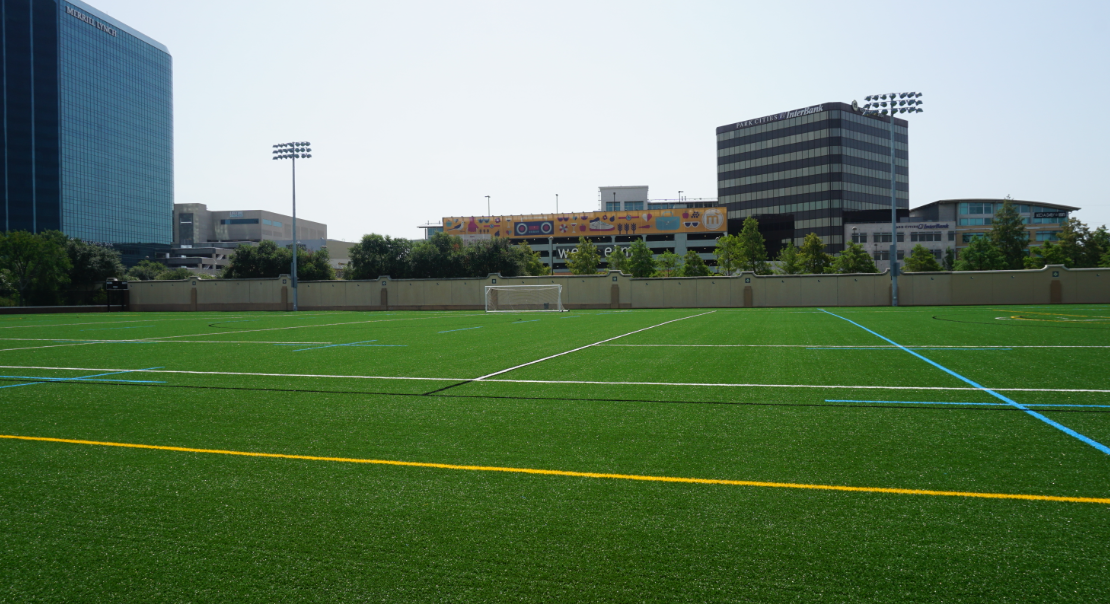High school soccer field dimensions typically measure 100-130 yards long and 50-100 yards wide. The field is divided into two halves by a halfway line and features a center circle with a 10-yard radius at the midpoint.
The goal boxes are typically 6 yards from the goal post and 18 yards wide. High school soccer field dimensions play a crucial role in shaping the game. Understanding the precise measurements is vital for both players and coaches. Whether it’s the length, width, or dimensions of the goal boxes, each aspect of the field holds significance in determining the flow and strategy of the game.
Moreover, knowing the exact dimensions helps in maintaining uniformity and fairness across all high school soccer fields. Let’s delve deeper into the essential aspects of high school soccer field dimensions and their impact on the game.
Importance of Accurate Field Dimensions
When it comes to high school soccer, accurate field dimensions play a crucial role in ensuring the safety of players and maintaining fair play. The proper measurements of the soccer field impact the game in various ways, such as preventing injuries and ensuring fair play. Let’s delve into the importance of accurate field dimensions and how they affect the game.

Table of Contents
Preventing Injuries
Accurate high school soccer field dimensions and feet are essential in preventing injuries. A properly marked and measured field helps players to be aware of their surroundings, reducing the risk of collisions and tripping. In addition, having the correct dimensions allows for adequate spacing between the players, which can minimize the chances of accidents and injuries during the game.
Ensuring Fair Play
High school soccer field dimensions pdf outlines the boundaries within which the game is played. By adhering to these measurements, fair play is ensured as it prevents any team from gaining an unfair advantage due to field size discrepancies. When the field dimensions are accurate, it promotes fair competition, allowing all players to showcase their skills within the standardized parameters.
Standard Field Measurements
When it comes to High School Soccer Field Dimensions, understanding the Standard Field Measurements is crucial for players, coaches, and spectators alike. Let’s delve into the specifics of the field dimensions that form the backbone of every soccer match.
Length and Width
In high school soccer, the standard field length is approximately 110 to 120 yards with a width of 70 to 80 yards. This site provides ample space for players to showcase their skills while ensuring a competitive and fair gameplay environment.
Goal Size
The goals on a high school soccer field are typically 8 feet high and 24 feet wide. These dimensions are carefully regulated to maintain consistency across different matches and allow players to aim for the target with precision.
Penalty Area Dimensions
The penalty area, often referred to as the 18-yard box, has dimensions of 44 yards in length and 18 yards in width. This area plays a crucial role in determining fouls and penalties, adding strategic depth to the game while ensuring player safety.

Variations in Field Dimensions
When it comes to High School Soccer Field Dimensions, understanding the variations in field dimensions is crucial for players, coaches, and fans alike. Different standards and regulations dictate the size of soccer fields, impacting the gameplay and strategies employed during matches.
International Standards
International soccer field dimensions are standardized to ensure consistency across competitions. Pro soccer field dimensions typically adhere to these standards, with slight variations allowed based on specific requirements.
High School Soccer Field Dimensions
High school soccer field dimensions in meters may vary slightly from international standards due to space constraints or regional preferences. High schools need to comply with specific regulations to provide a suitable playing environment for student-athletes.
Impact of Field Size on Gameplay
High school soccer field dimensions play a crucial role in shaping the gameplay. The size of the field directly impacts the speed of play and tactical considerations, influencing the strategies and dynamics of the game.
Speed of Play
The dimensions of the soccer field significantly influence the speed of play. A larger field allows for more space, promoting faster-paced gameplay as players have more room to maneuver. Conversely, a smaller field constrains movement, resulting in a slower tempo as players have limited space to operate.
Tactical Considerations
The size of the soccer field dictates various tactical considerations for teams. In a larger field, teams can employ wide formations, utilizing the space to spread out and create scoring opportunities. On the other hand, a smaller field encourages compact defensive strategies, as players can quickly close down opponents due to the limited space available.
Maintaining Proper Field Dimensions
When it comes to High School Soccer Field Dimensions, maintaining proper field dimensions is crucial for ensuring fair play and safety during matches. Properly measuring and adjusting the dimensions of the soccer field is essential for the development of players and the overall success of the game.
Regular Measurements
Regular measurements of the soccer field size in meters are essential to ensure that the playing surface meets the standard dimensions. Utilize tools such as a high school soccer field dimensions calculator to accurately measure the length, width, and other key aspects of the field.
Adjustments and Corrections
Regular inspections and adjustments are necessary to maintain the accuracy of the field dimensions. Make corrections promptly to address any discrepancies and ensure that the field meets the required standards for high school soccer matches.
Consequences of Incorrect Field Dimensions
High School Soccer Field Dimensions play a crucial role in ensuring fair play and safety during matches. Incorrect field dimensions can lead to various consequences that impact the game’s integrity and players’ well-being.
Injuries
Incorrect field dimensions can increase the risk of player injuries due to restricted space or uneven playing surfaces. Players may collide more frequently or struggle to maneuver properly, leading to sprains, strains, or more severe injuries.
Disputed Match Outcomes
When the field dimensions do not meet the standard requirements, match outcomes can be disputed. Goals may be scored from non-regulation distances, leading to debates over the validity of results and potentially affecting team standings.
Considerations for Field Construction
When it comes to constructing a high school soccer field, several essential considerations need to be taken into account to ensure the field meets the necessary standards for play. From drainage systems to material selection, each aspect plays a crucial role in the overall construction of the field.
Drainage Systems
Proper drainage is a fundamental aspect of field construction as it helps prevent waterlogging, which can affect the quality of play and the safety of the players. Installing an efficient drainage system ensures that the field remains playable even after heavy rainfall, reducing the risk of injuries and maintaining the integrity of the turf. When constructing a high school soccer field, implementing a well-designed drainage system is imperative to ensure optimal playing conditions.
Material Selection
The selection of materials for the construction of a high school soccer field is crucial in determining the durability and performance of the playing surface. Quality turf, infill, and base materials are essential to create a safe and reliable playing environment for the athletes. Additionally, choosing materials that are suitable for the local climate and weather conditions can enhance the longevity of the field and reduce maintenance requirements. Careful consideration of the materials used is vital to ensure that the high school soccer field meets the necessary standards for safety and playability.
Future Trends in Soccer Field Design
When it comes to the future trends in soccer field design, there are exciting developments on the horizon that are set to revolutionize the way we view and interact with these playing surfaces. From technological innovations to a strong focus on environmental sustainability, the soccer fields of tomorrow are poised to be more advanced and eco-friendly than ever before.

Technological Innovations
In the realm of technological innovations, soccer fields are set to undergo a significant transformation. With the integration of cutting-edge technologies such as smart sensors, AI-powered maintenance systems, and augmented reality overlays, the future soccer field will not only enhance player performance but also provide a more immersive and interactive experience for spectators.
Environmental Sustainability
When it comes to environmental sustainability, the future trends in soccer field design are leaning towards eco-conscious solutions. From the use of recycled materials in field construction to implementing water-saving irrigation systems and incorporating natural turf management practices, soccer fields are moving towards a greener and more sustainable future.
Conclusion
To summarize, understanding the dimensions of a high school soccer field is crucial for players, coaches, and referees alike. The field’s size and markings must comply with the regulations set by the NFHS to ensure fair play and safety. Aspiring soccer players must train on the correct field size to build their skills and adapt to the game’s standards.
With the right field dimensions and adequate training, high school soccer players can achieve their goals and reach their full potential.

